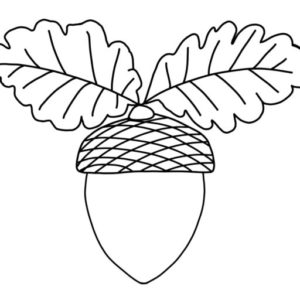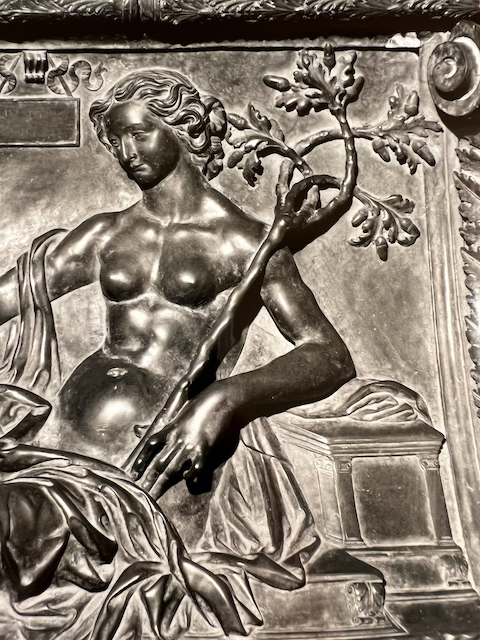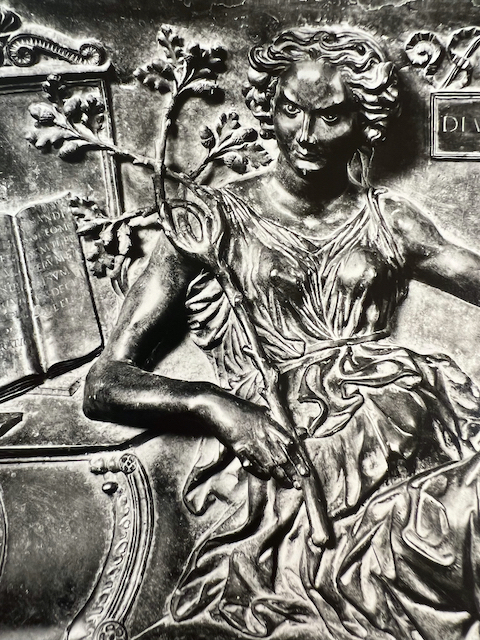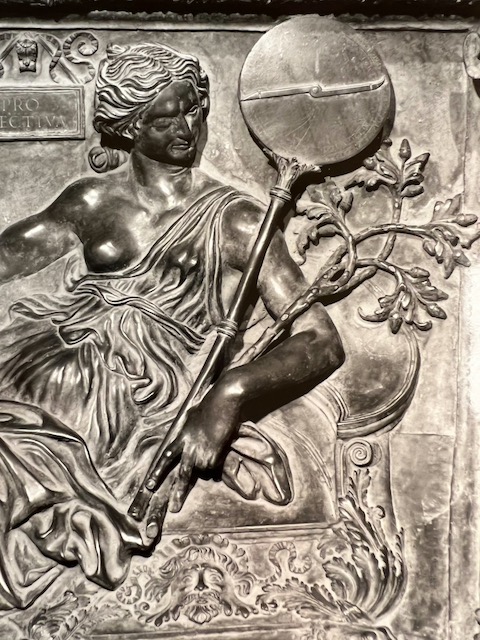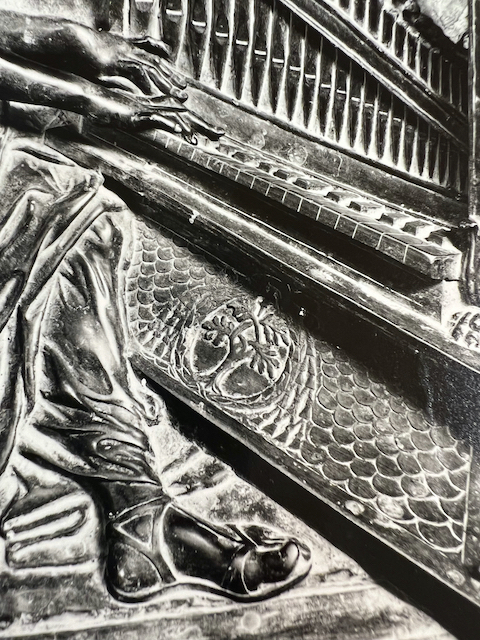Hierarchy via della Rovere Heraldry:
As a hierarchy can be established through the nudity throughout the figures, a certain hierarchy can further be established through the inclusion of the della Rovere oak branch. Wright argued that the figures of Rhetorica, Prospectiva, Dialectica, and Musica have these symbols of the Pope’s family to reflect his interest and patronage of these specific disciplines in his lifetime. She adds that this can be seen to memorialize his moral virtues and “functioning as a reminder of what Sixtus was or, in practice, formulating a positive memory of him in the mind of the beholder.”[147] In this understanding, the hierarchy of the Liberal Arts corresponds with Sixtus’s command and relationship to each of the Arts, further connecting Sixtus and the reemergence of the Liberal Arts in papal doctrine. These figures that are nude or hold the element of the della Rovere symbols highlight the studies that Sixtus completed during his lifetime, alluding to his learning, further linking these disciplines with his memorial.
Hierarchy is also established in the della Rovere symbols, however, this discussion joins into the greater examination of nudity being used to establish a hierarchy. Set against the varying levels of nudity through their dress, four figures hold the heraldic oak branch of the della Rovere family: Rhetorica (figure 64), Dialectica (figure 65), Prospectiva (figure 66), and Musica (figure 67). Rhetoric who holds the oak branch is fully bare-breasted, Prospectiva has one breast exposed while the other one is tantalizingly hidden yet revealed through the drapery of her dress. Dialectica and Musica have an emphasis on their breasts as the dress is pressed fully against their chest, emphasizing their body. These specific disciplines shown with the della Rovere symbol of the oak branch are related to Sixtus’s patronage, scholarly interests, and pursuits. As Sixtus established the Sistine Chapel and choir, this connects specifically to the discipline of Music in the center. Rhetoric is connected to the legacy of epideictic rhetoric that was used throughout the papal court.[148] This rhetoric of praise and blame is prevalent throughout other works where Sixtus served as the patron and thus it can be identified within this sculpture.[149] The tomb and its thematic use of the Liberal Arts ultimately reflects the shift from pure scholasticism to epideictic rhetoric, praising the history and legacy of Sixtus. Each figure associated with the della Rovere familial line constructs the legacy of Sixtus, aligning the liberal arts with Sixtus’s scholarly and theological interests and pursuits, thereby integrating the della Rovere family with the scholastic dynasty of the Liberal Arts. As the personifications of the Liberal Arts serve as a “biographical agenda” they communicated Sixtus’s papacy as one that led to the resurgence of the Liberal Arts.
Furthermore, reference to Sixtus’s achievements can be found in the use of books to describe the figures. As each discipline is depicted with at least one book, and most come from books found within the Vatican Library, the inclusion of each book alludes to Sixtus’s role in expanding the Vatican Library and opening it to scholarly individuals and the cardinals. Although each book alludes to the discipline and important philosophical and theological scholars, a deep association can be made to Sixtus’s enlargement of the Vatican Library.
